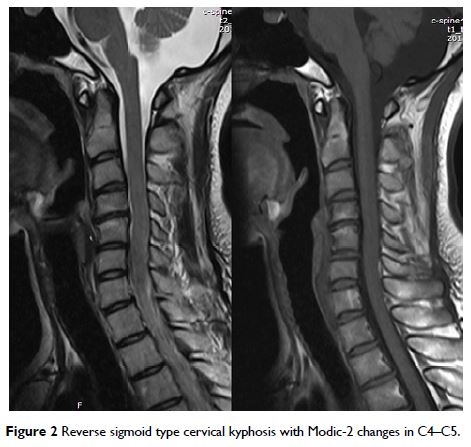108384
论文已发表
注册即可获取德孚的最新动态
IF 收录期刊
- 3.4 Breast Cancer (Dove Med Press)
- 3.2 Clin Epidemiol
- 2.6 Cancer Manag Res
- 2.9 Infect Drug Resist
- 3.7 Clin Interv Aging
- 5.1 Drug Des Dev Ther
- 3.1 Int J Chronic Obstr
- 6.6 Int J Nanomed
- 2.6 Int J Women's Health
- 2.9 Neuropsych Dis Treat
- 2.8 OncoTargets Ther
- 2.0 Patient Prefer Adher
- 2.2 Ther Clin Risk Manag
- 2.5 J Pain Res
- 3.0 Diabet Metab Synd Ob
- 3.2 Psychol Res Behav Ma
- 3.4 Nat Sci Sleep
- 1.8 Pharmgenomics Pers Med
- 2.0 Risk Manag Healthc Policy
- 4.1 J Inflamm Res
- 2.0 Int J Gen Med
- 3.4 J Hepatocell Carcinoma
- 3.0 J Asthma Allergy
- 2.2 Clin Cosmet Investig Dermatol
- 2.4 J Multidiscip Healthc

颈椎后凸的 Modic 改变特征及其与颈部颈部疼痛的关系
Authors An YH, Li J, Li YQ, Shen Y
Received 30 March 2017
Accepted for publication 24 June 2017
Published 14 July 2017 Volume 2017:10 Pages 1657—1661
DOI https://doi.org/10.2147/JPR.S138361
Checked for plagiarism Yes
Review by Single-blind
Peer reviewers approved by Dr Amy Norman
Peer reviewer comments 3
Editor who approved publication: Dr Katherine Hanlon
Background: The
purpose of this study was to evaluate characteristics of Modic changes in
cervical kyphosis (CK) and their association with axial neck pain.
Methods: Study participants included 286 asymptomatic or symptomatic
patients with CK (mean age = 54.2 ± 12.2 years) who
were consecutively enrolled from March 2009 to October 2015. Clinical and
radiographic evaluations were performed at a university outpatient department.
CK was classified as global type, reverse sigmoid type, or sigmoid type.
Results: There were 138 participants with global type CK, 103 with reverse
sigmoid type CK, and 45 with sigmoid type CK. Of the 286 participants, 102 had
Modic changes (Modic-1 in 38 segments and Modic-2 in 75 segments). Spinal cord
compression grade and disc degeneration occurred more frequently in the group
with axial neck pain compared to the group without pain. Angular motion was decreased
in those with axial neck pain (mean ± standard deviation [SD] 7.8°±4.6°)
compared to those who were asymptomatic (mean ± SD 8.9°±5.1°; P <0.001). In multivariate
logistic regression analysis, Modic changes were associated with axial neck
pain (odds ratio =5.356; 95% confidence interval =1.314–12.800; P <0.001).
Conclusion: Modic changes occur most commonly in association with CK global
type and less commonly with reverse sigmoid type and sigmoid type. Modic
changes are associated with axial neck pain in patients with CK.
Keywords: cervical kyphosis, axial neck pain, Modic change, kinematic
analysis, magnetic resonance imaging
